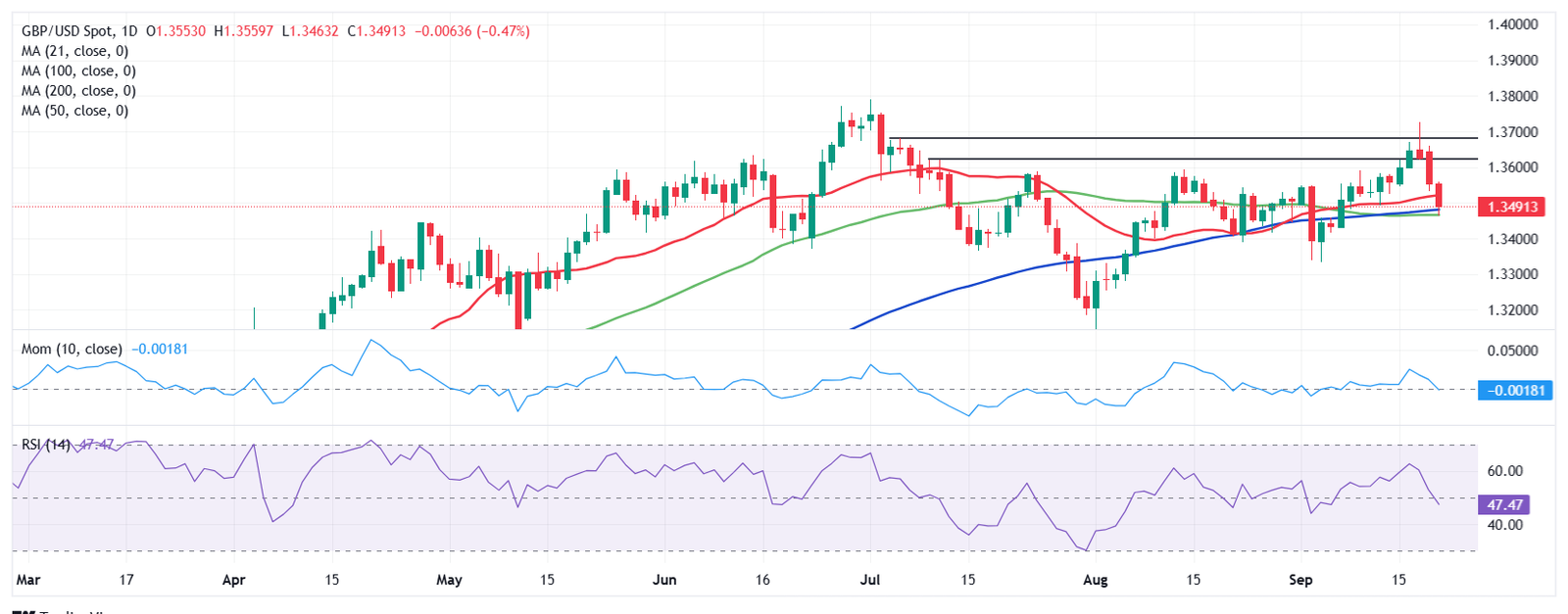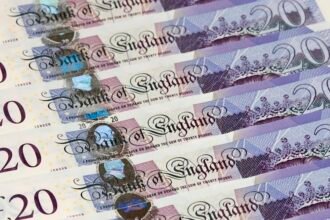- Pound Sterling witnessed two-way swings versus the US Dollar, and failed to sustain above 1.3600 yet again.
- GBP/USD awaits preliminary US/UK business PMI reports ahead of US PCE inflation.
- Technically, GBP/USD remains a ‘buy-the-dip’ trade as long as the daily RSI remains above the midline.
The Pound Sterling (GBP) witnessed an eventful and volatile week against the US Dollar (USD) as markets weighed monetary policy decisions by the US Federal Reserve (Fed) and the Bank of England (BoE).
Pound Sterling reversed weekly gains
Even though the week was dominated by high-impact labor and inflation data from the United Kingdom (UK), the main driver behind the GBP/USD price action remained the USD and the sentiment surrounding the Fed easing outlook.
The week began with the extension of the USD’s downtrend as markets had almost priced in three interest rate cuts by the Fed this year amid heightened stagflation risks in the United States (US) economy.
That, combined with the highest inflation in the UK since January 2024, propelled the pair above the 1.3650 area before reaching fresh 11-week highs at 1.3723 in a knee-jerk reaction to the Fed policy announcements.
The UK’s Office for National Statistics (ONS) showed on Wednesday that the annual Consumer Price Index (CPI) rose by 3.8% in August, missing the estimates for a 3.9% growth. The reading was well above the BoE’s 2% inflation target.
Meanwhile, the UK labor data published on Tuesday highlighted that the annual growth in Average Earnings Excluding Bonus slowed to 4.8% in the three months to July from 5% previously, while the Unemployment Rate remained unchanged at 4.7%, both readings matching the analysts’ estimates.
The Fed lowered rates by the expected 25 basis points (bps) on Wednesday, while the Summary of Economic Projections (SEP), the so-called Dot Plot chart, showed that the Fed policymakers foresee two additional rate cuts this year.
However, Fed Chairman Jerome Powell, in his post-policy meeting press conference, adopted a measured rhetoric on further policy easing. Powell called the rate cut a risk management policy action and maintained the bank’s ‘meeting-by-meeting’ stance.
The USD dived to a fresh three-and-a-half-year low against its six major rivals following the Fed’s policy verdict, but quickly changed course and rebounded firmly on Powell’s reassurance. Subsequently, the pair tripped from over two-month highs, extending its corrective decline in the remainder of the week toward 1.3500.
Thursday’s BoE cautious hold also failed to save the day for the Pound Sterling as the Greenback recovery gathered strength on encouraging US economic data releases.
The BoE policymakers voted 7-2 to hold the policy rate at 4% and also to slow the annual pace at which the central bank unloads the gilts that it purchased from 2009 and 2021 to 70 billion pounds from 100 billion pounds. There was no change in the language of the policy statement.
Meanwhile, data on Thursday showed that Initial claims for state unemployment benefits decreased 33,000 to a seasonally adjusted 231,000 for the week ended September 13, partially reversing a surge in the prior week to the highest level since October 2021.
The Philadelphia Federal Reserve Manufacturing Index surged to 23.2 in September, a significant leap from the estimated rebound of 2.3.
On Friday, the ONS said that British Retail Sales rose by a stronger-than-expected 0.5% over the month in August. The forecast was for a 0.4% increase.
The annual Retail Sales slowed slightly to 0.7% in the same period, although beat expectations of 0.6%. The upbeat data failed to pause the pair’s corrective downside.
Focus is back on US/UK PMIs and PCE inflation
With the Fed and BoE monetary policy outcomes out of the way, the focus is back on the top-tier economic data releases from both sides of the Atlantic.
Speeches from Fed policymakers will also be closely scrutinized alongside any fresh developments on the geopolitical and trade front.
Data-wise, the US calendar is a relatively busier one this week as the UK docket features only the S&P Global Manufacturing and Services PMI data of note on Tuesday.
Monday is devoid of any high-impact data releases, and hence, Tuesday’s US and UK preliminary S&P Global PMI data will be eagerly awaited in the early part of the week.
On Wednesday, the US New Home Sales will entertain traders ahead of Thursday’s final revision to the second-quarter Gross Domestic Product (GDP), followed by the weekly Jobless Claims, Durable Goods Orders, and Existing Home Sales data.
The Fed’s preferred inflation measure, the Core Personal Consumption Expenditure (PCE) Price Index, will hog the limelight on Friday.
GBP/USD: Technical outlook

The daily chart shows the GBP/USD correction from 11-week highs of 1.3726 tests the 21-day Simple Moving Average (SMA) at 1.3524, with the 14-day Relative Strength Index (RSI) defending the midline.
So long as the 50 level holds, Pound Sterling buyers remain hopeful of a short-lived correction.
That said, they must find acceptance above the 1.3600-1.3620 supply zone on a daily candlestick closing basis for any meaningful recovery.
The July 4 high of 1.3681 will be next on their radars, followed by 1.3788 (July 1 high).
On the flip side, a sustained break below the 21-day SMA at 1.3524 will threaten the confluence support of the 50-day SMA and the 100-day SMA near 1.3475.
If the selling pressure gathers steam, a fresh downtrend toward the September low of 1.3333 could be on the cards.
Further declines could threaten the August 4 low of 1.3254.
Economic Indicator
S&P Global Services PMI
The Services Purchasing Managers Index (PMI), released on a monthly basis by S&P Global, is a leading indicator gauging business activity in the UK’s services sector. Survey responses reflect the change, if any, in the current month compared to the previous month and can anticipate changing trends in official data series such as Gross Domestic Product (GDP), employment and inflation. The index varies between 0 and 100, with levels of 50.0 signaling no change over the previous month. A reading above 50 indicates that the services economy is generally expanding, a bullish sign for the Pound Sterling (GBP). Meanwhile, a reading below 50 signals that activity among service providers is generally declining, which is seen as bearish for GBP.
Next release:
Tue Sep 23, 2025 08:30 (Prel)
Frequency:
Monthly
Consensus:
–
Previous:
54.2
Source:
S&P Global





















